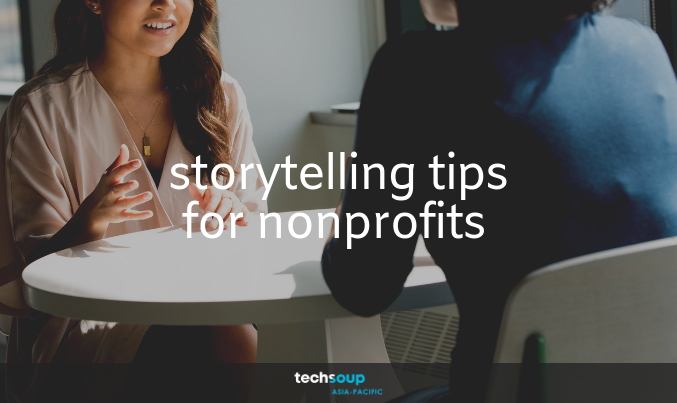Nowadays, discussions about marketing and storytelling typically have an overemphasis on tools. Finding and championing tools for beginners, advanced users, those on a budget, those working on mobiles and many other variations. While tools in itself can give your stories a nice vibrant look, bulk of what makes your stories captivating are actually not influenced by the apps or devices you are using. Instead, an engaging story relies mainly on how well you conceptualized, organized and tailored your stories before you even opened your apps and devices.
Whether you are shooting a video, arranging a slideshow or even simply writing a blog, undergoing proper conceptualization can ensure that you are able to present your story in the best way possible. To help you properly conceptualize and organize your stories in the future, here are three easy and practical tips that you can always rely on:
Know who your story is for
Nonprofits have the unenviable task of juggling several unique networks. From corporate funders to volunteers and every one in between, it is fair to say that each of these groups would be inclined to take interest in different facets of your operations, missions and whatnot.
Having a clear idea of who your audience is can help you identify ways to better tailor your story, allowing it to be more relatable and to better resonate with your target audience. Take a fundraising event for example, if you were to arrange a blog or a video to fundraise among corporate partners, you may want to consider highlighting certain aspects of your story that speaks about its sustainability. However, if you were to crowdfund, you may want to focus instead on highlighting the easiest ways each person could donate, creating a sense of accessibility for the general public to help you in your cause.
Have a purpose in mind
Sharing your nonprofit’s story for the sake of simply sharing is much like firing a blank bullet, it is sadly reduces your story to plain noise. That said, one of the key goals you should always aim to achieve when conceptualizing your story is to identify its general purpose.
Whether you are using this story to raise funds, to promote your program, to enlist volunteers or maybe to simply raise awareness about your cause; a clear purpose could serve as a great foundation to your story, giving you better direction as to what kind of information is and is not relevant to your story.
Operationalize your story’s purpose
Lastly, never forget to find ways to operationalize your purpose. You can easily achieve this by thinking of the tangible and measurable outcomes you can expect from your story. While this does not affect your story in itself, this step does influence how you will create or amend future stories with similar goals. As you continue to monitor the outcomes of your stories, you then allow yourself to better understand your audience and how your stories and mission resonate with them. Most of all, this also answers the question that we typically would forget to ask – was our story effective?
And that’s about it. As you can see from the three tips above, creating captivating and engaging stories be it for video, print or for live presentations simply rely on how well you are able to organize your story from the beginning. By having a clear understanding of its purpose and your target audience, you can then enable yourself to better tailor a story that should not just pique your audience’s interest, but inspire them to take those next steps in supporting you and your cause as well.











